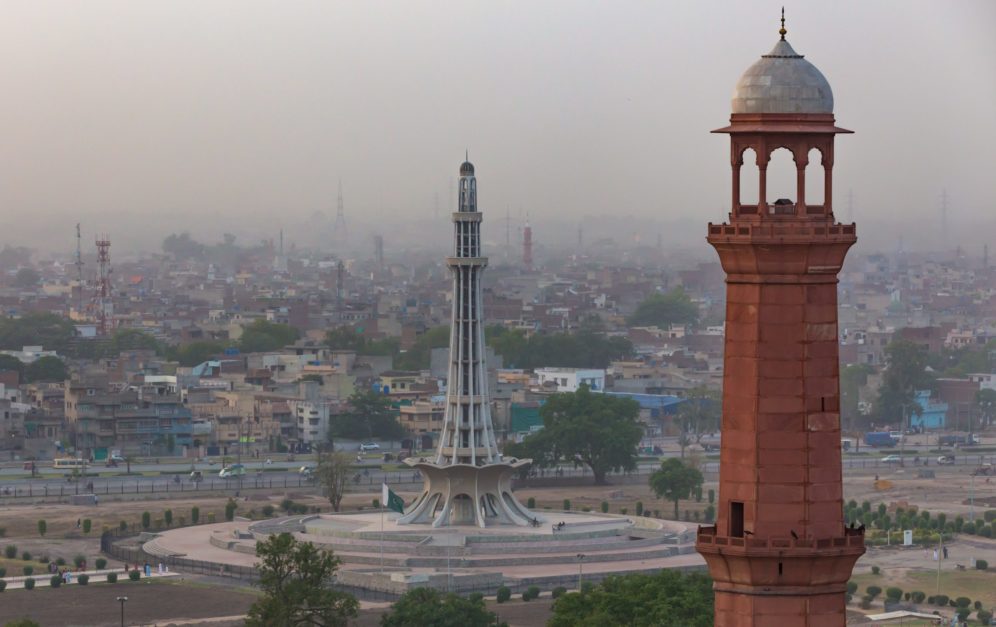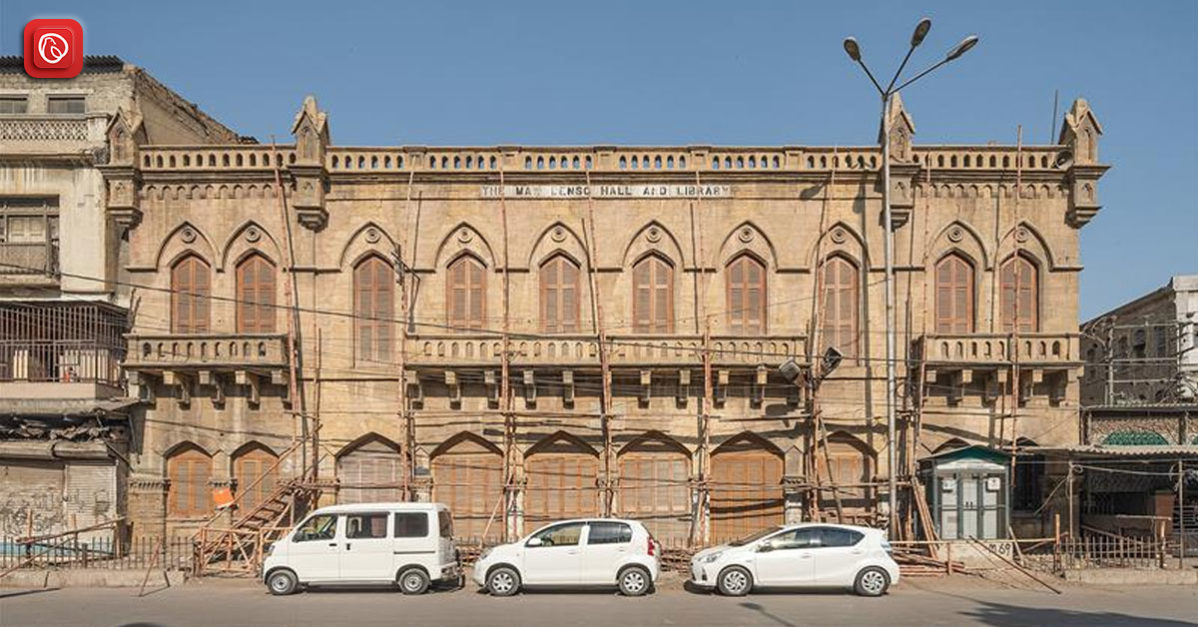Each country is characterized by a number of historical buildings, landmarks, and monuments that reflect its cultural heritage. Careful efforts are made to trace their prehistoric past and preserve them in their original glory. While Pakistan is home to a number of such historic sites, Minar-e-Pakistan is considered the most significant among them.
Minar-e-Pakistan, also known as the ‘Tower of Pakistan’ or ‘Pakistan’s Liberty Tower’, is a national monument in Lahore. The tower was constructed between 1960 and 1968 at the location where the All-India Muslim League passed the Lahore Resolution on March 23, 1940.
It marked the first official call for an independent homeland for British India’s Muslims, as advocated by the two-nation theory. In 1947, the resolution was instrumental in the creation of an independent Pakistani state.
Graana.com, Pakistan’s smartest property portal, outlines all related information about Minar-e-Pakistan below.
Minar e Pakistan At a Glance
| Fact | Description |
|---|---|
| Location | Lahore, Pakistan |
| Purpose | Commemorates the Lahore Resolution, which led to the creation of Pakistan in 1947 |
| Architect | Designed by Nasreddin Murat-Khan, an Azerbaijani architect |
| Height | 70 meters (230 feet) |
| Construction | Started on March 22, 1960, and completed on October 22, 1968 |
| Significance | Marks the spot where the Lahore Resolution was passed on March 23, 1940 |
| Architecture | Blend of Islamic and Mughal architectural styles |
| Material | Constructed with reinforced concrete and faced with stone |
| Platforms | Consists of a large square platform with three smaller platforms |
| Inscriptions | Quranic verses and excerpts from the Lahore Resolution are inscribed on the monument |
| National Symbol | Represents the ideological foundation of Pakistan |
| Visitors | A popular tourist attraction and a symbol of national pride |
Minar-e-Pakistan: Location & Nearby Attractions

The tower is situated in the heart of Greater Iqbal Park, one of the biggest parks in Lahore. The tomb of Hafeez Jalandhari, an Urdu poet who wrote the lyrics of the National Anthem of Pakistan, is situated in the courtyard of Minar-e-Pakistan.
Some other tourist attractions in the vicinity are as follows:
| Place | Distance from Minar-e-Pakistan |
| Gurudwara Dera Sahib | 0.2 miles |
| Samadhi of Ranjit Singh | 0.2 miles |
| Badshahi Mosque | 0.3 miles |
| Lahore Fort | 0.3 miles |
| National History Museum | 0.3 miles |
| Tomb of Allama Iqbal | 0.3 miles |
| Shalimar Gardens | 0.4 miles |
| Naqsh Art Gallery | 0.6 miles |
| Masjid Wazir Khan | 1.1 miles |
| Lahore Museum | 1.6 miles |
Who Made Minar-e-Pakistan?

The architect of Minar-e-Pakistan was Nasreddin Murat-Khan, a Russian-born Pakistani architect and civil engineer. He was also the architect behind Gaddafi Stadium and several other notable structures.
The architecture of Minar-e-Pakistan is a mix of Mughal Islamic architecture and contemporary styles. It is surrounded by a large park, an artificial lake, and trickling fountains, all of which add to its beauty.
The tower features crescents and stars, symbols of Pakistani culture that are also found in the national flag. The base is approximately 8 meters above ground level. The Minar E Pakistan height is around 70 meters above the ground, with the tower rising about 62 meters above the ground.
The base of the tower is designed like a flower, with the petals spreading at a height of 9 meters. The tower’s diameter is approximately 9.75 meters. The rostrum faces Badshahi Mosque and is comprised of patterned tiles. There are four platforms in the base.
The first platform is made of uncut stones from Taxila, which symbolize the unwavering efforts of Indian Muslims during the time of independence. The second level is made of hammer-dressed stones, representing the rigorous struggle for freedom, whereas the third platform is composed of sculpted stones, signifying the progress of the movement.
Finally, the fourth is made up of white marble to display the success and sovereignty of the freedom movement. Visitors can climb the stairs or use the elevator to reach the top of the minaret to get a panoramic view of the city. It is also used for political and religious gatherings.
Construction

The foundation stone of Minar-e-Pakistan was placed on March 23, 1960. It took eight years to complete (on October 21, 1968), and the entire project cost around Rs. 7,058,000. At the request of Governor of West Pakistan Akhter Husain, the money was raised by levying an extra tax on movie and horse racing tickets.
Important Inscriptions
There are botanical engravings on ten focalizing white marble plaques at the base of Minar-e-Pakistan. The inscriptions include the highlighted details of the Lahore Resolution and Delhi Resolution in Urdu, Bengali, and English.
Quranic verses and the 99 attributes of God are etched in Arabic calligraphy on various plaques. Furthermore, the National Anthem of Pakistan (in Urdu and Bengali), excerpts from Muhammad Ali Jinnah’s speeches (in Urdu, Bengali, and English), and a few couplets by Allama Iqbal are also engraved there.
Minar-e-Pakistan: History and Significance
Minar-e-Pakistan holds great historical importance since it symbolizes one of the most significant freedom movements in history. The day of March 23, 1940, is remembered as the day when Muslims demanded their own homeland.
It echoed Allama Iqbal’s presidential address from Allahabad in 1930, in which he expressed his desire for an independent country for India’s Muslims. The Lahore Resolution urged that Muslim-majority districts in India’s northeastern and northwestern zones be united as independent states.
Noteworthy Events and Visits
In 1999, Atal Bihari Vajpayee, the Indian Prime Minister of that time, became the first leader from India to pay a special visit to Minar-e-Pakistan. On 21st April 2022, former prime minister and Pakistan Tehreek-e-Insaf (PTI) Chairman Imran Khan held a mammoth public gathering at Minar-e-Pakistan, after holding two in Karachi and Peshawar earlier.
This was after he was removed from his position after a no-confidence vote. This series of massive rallies are intended as a peaceful struggle for what Imran Khan calls the ‘real freedom’ movement. Minar-e-Pakistan is also where he displayed the strength of his political party in 2011.
In fact, the political party has held a total of four public gatherings at this site in the last decade, thus displaying the significance of the monument in shaping the nation.
Minar-e-Pakistan reflects the subcontinent’s Muslims’ never-ending hardships and endeavors to get to their beloved motherland. It serves as a reminder of the blood, sweat, and tears that went into obtaining this freedom. It is not only historically significant for Pakistanis, but it is also a popular tourist destination.
For more information on the important landmarks of Pakistan, visit Graana blog.
FAQs
Here are some more FAQs about Minar-e-Pakistan
What is Minar-e-Pakistan and where is it located?
Minar e Pakistan is a national monument located in the city of Lahore, Pakistan. It was built to commemorate the Lahore Resolution of 1940, which was a key moment in the movement for an independent Pakistan.
When was Minar-e-Pakistan built?
Minar Pakistan was built in the 1960s, to commemorate the 23rd of March 1940, when the Lahore Resolution was passed.
Who designed Minar-e-Pakistan?
Minar-e-Pakistan was designed by a team of architects and engineers led by Nasreddin Murat-Khan, who was a famous architect of that time.
How tall is Minar-e-Pakistan?
Minar-e-Pakistan is approximately 70 meters tall.
What is the significance of Minar-e-Pakistan?
Minar-e-Pakistan is a symbol of the struggle for independence of Pakistan. It represents the people’s desire for a separate homeland and is an important landmark of Pakistani culture and history.
What is the architecture style of Minar-e-Pakistan?
Minar-e-Pakistan is a blend of Mughal and modern architecture. The tower is constructed of reinforced concrete and clad in marble and red sandstone.
Is there an entry fee to visit Minar-e-Pakistan?
There is no entry fee to visit Minar-e-Pakistan. The monument is open to the public and visitors can explore the surrounding gardens and take in the views of the city.
Can visitors go to the top of Minar-e-Pakistan?
No, visitors are not allowed to climb to the top of Minar-e-Pakistan. The tower is closed to the public, but visitors can still enjoy the views of the surrounding area from the base of the monument.
What is the best time to visit Minar-e-Pakistan?
The best time to visit Minar-e-Pakistan is during the cooler months of the year, from November to March. The weather is more pleasant during this time and the gardens around the monument are in full bloom.
What other attractions are there near Minar-e-Pakistan?
There are several other popular tourist attractions located near Minar-e-Pakistan, such as the Badshahi Mosque, Lahore Fort, and the Walled City of Lahore. These attractions offer visitors a glimpse into the rich history and culture of Lahore and Pakistan.
Read More
Top Historical Places in Pakistan
Shalimar Gardens
Fort Munro
Hiran Minar




